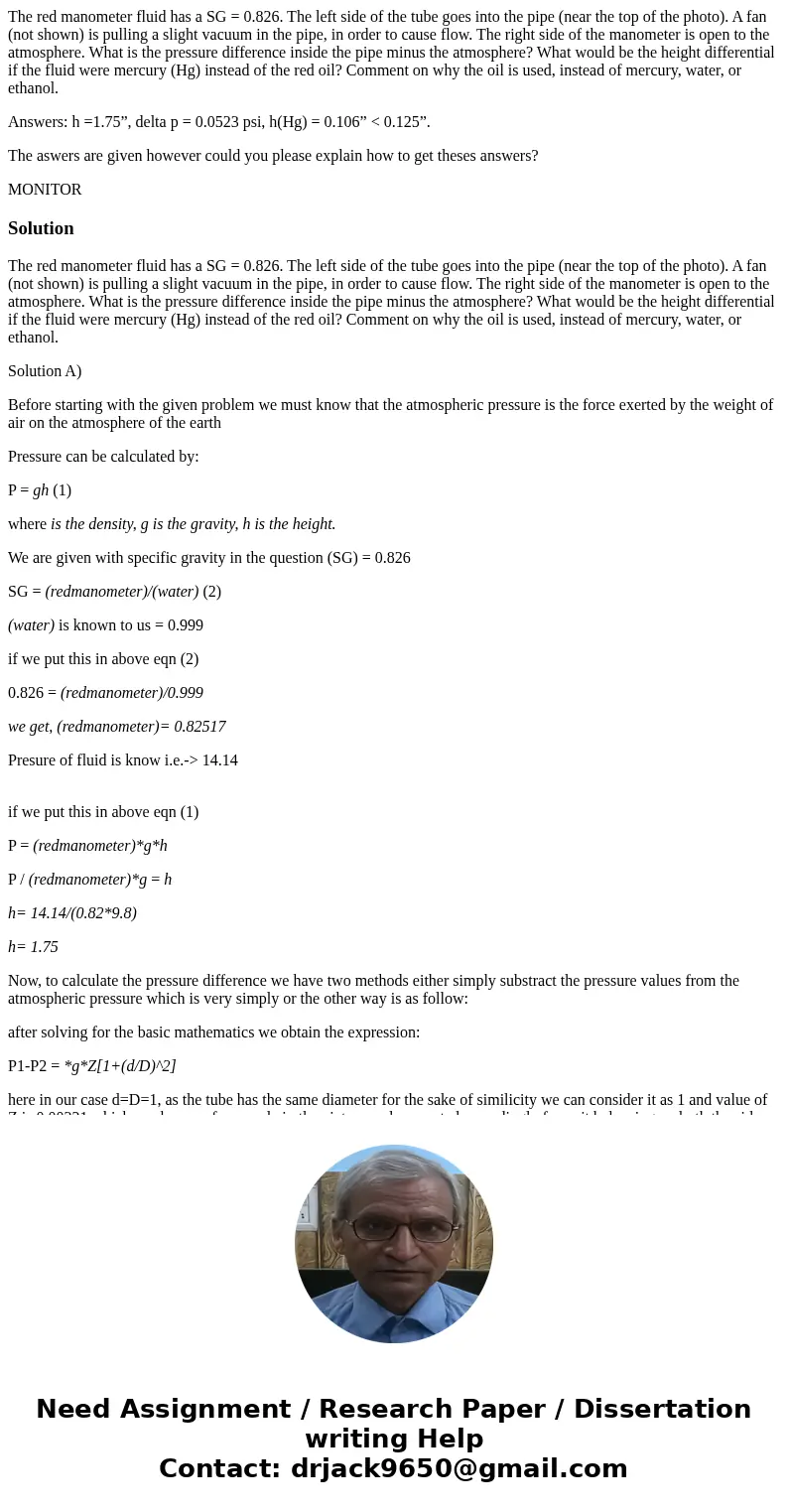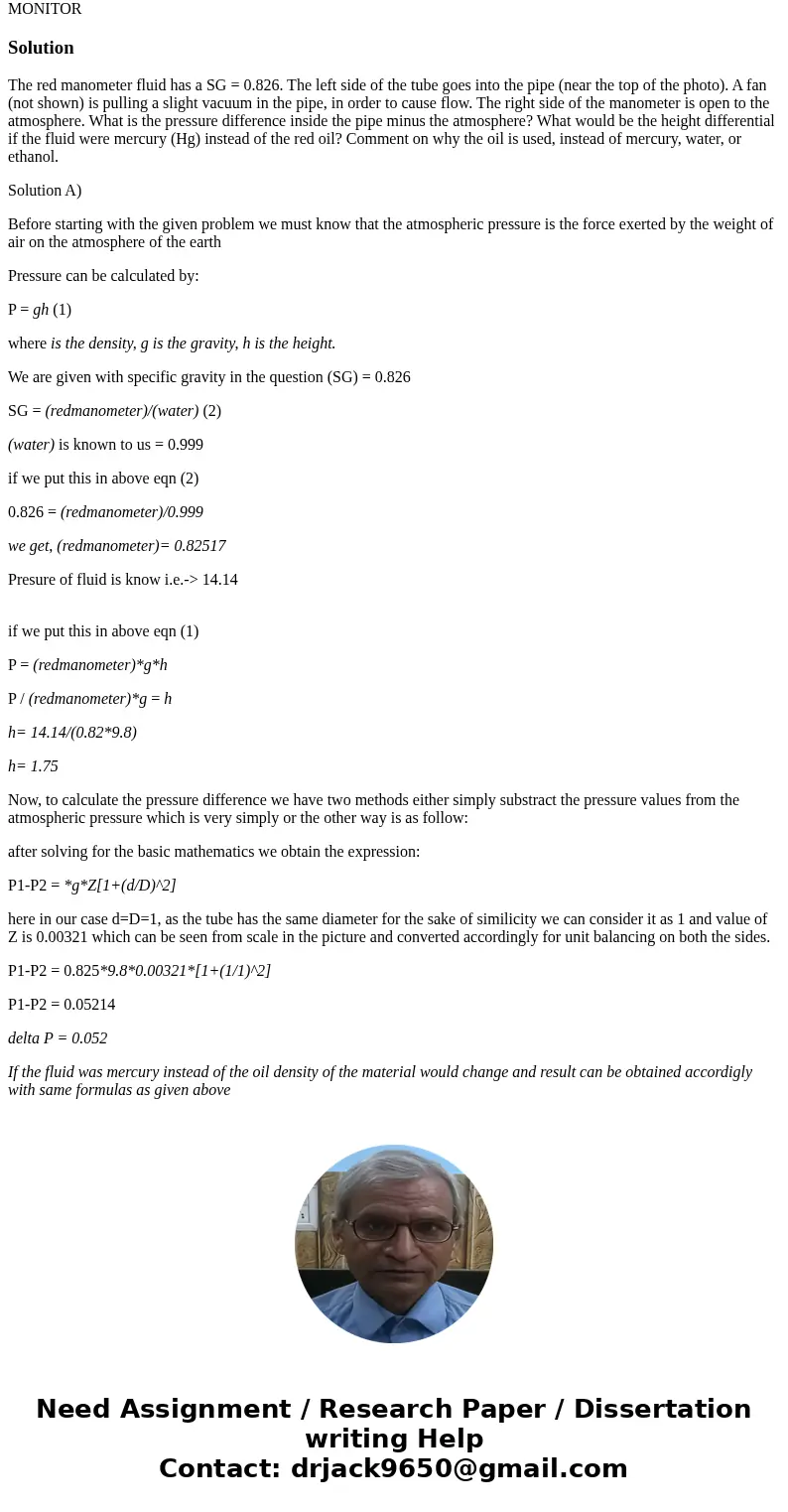The red manometer fluid has a SG 0826 The left side of the
The red manometer fluid has a SG = 0.826. The left side of the tube goes into the pipe (near the top of the photo). A fan (not shown) is pulling a slight vacuum in the pipe, in order to cause flow. The right side of the manometer is open to the atmosphere. What is the pressure difference inside the pipe minus the atmosphere? What would be the height differential if the fluid were mercury (Hg) instead of the red oil? Comment on why the oil is used, instead of mercury, water, or ethanol.
Answers: h =1.75”, delta p = 0.0523 psi, h(Hg) = 0.106” < 0.125”.
The aswers are given however could you please explain how to get theses answers?
MONITORSolution
The red manometer fluid has a SG = 0.826. The left side of the tube goes into the pipe (near the top of the photo). A fan (not shown) is pulling a slight vacuum in the pipe, in order to cause flow. The right side of the manometer is open to the atmosphere. What is the pressure difference inside the pipe minus the atmosphere? What would be the height differential if the fluid were mercury (Hg) instead of the red oil? Comment on why the oil is used, instead of mercury, water, or ethanol.
Solution A)
Before starting with the given problem we must know that the atmospheric pressure is the force exerted by the weight of air on the atmosphere of the earth
Pressure can be calculated by:
P = gh (1)
where is the density, g is the gravity, h is the height.
We are given with specific gravity in the question (SG) = 0.826
SG = (redmanometer)/(water) (2)
(water) is known to us = 0.999
if we put this in above eqn (2)
0.826 = (redmanometer)/0.999
we get, (redmanometer)= 0.82517
Presure of fluid is know i.e.-> 14.14
if we put this in above eqn (1)
P = (redmanometer)*g*h
P / (redmanometer)*g = h
h= 14.14/(0.82*9.8)
h= 1.75
Now, to calculate the pressure difference we have two methods either simply substract the pressure values from the atmospheric pressure which is very simply or the other way is as follow:
after solving for the basic mathematics we obtain the expression:
P1-P2 = *g*Z[1+(d/D)^2]
here in our case d=D=1, as the tube has the same diameter for the sake of similicity we can consider it as 1 and value of Z is 0.00321 which can be seen from scale in the picture and converted accordingly for unit balancing on both the sides.
P1-P2 = 0.825*9.8*0.00321*[1+(1/1)^2]
P1-P2 = 0.05214
delta P = 0.052
If the fluid was mercury instead of the oil density of the material would change and result can be obtained accordigly with same formulas as given above


 Homework Sourse
Homework Sourse